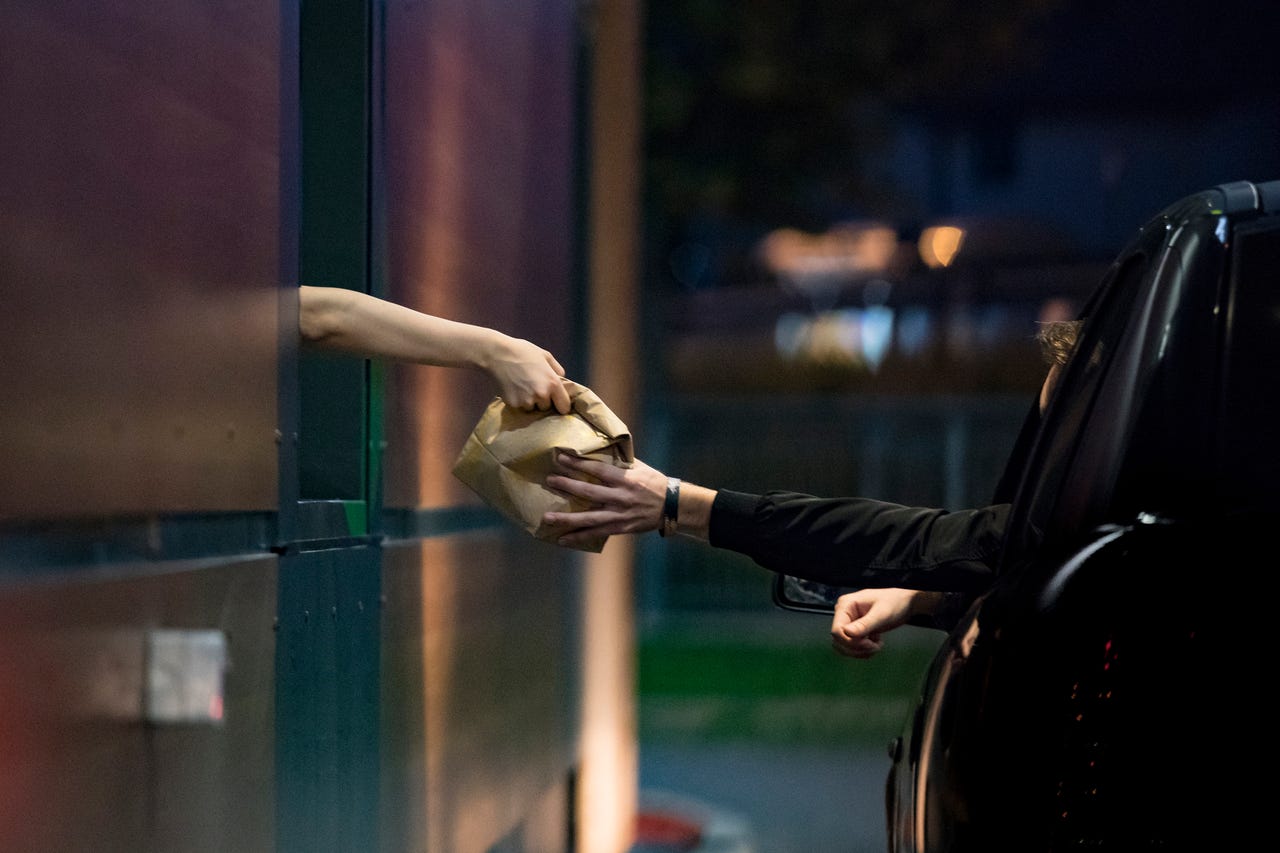
































A different logic.
kmatija/Getty ImagesCompanies want you to believe that everything they do is logical and sensible.
Even though, at times, decisions are made by panic-stricken CEOs with petrified PR people screaming in their ears.
Still, occasionally there's a certain glory to the straight-facedness of corporate logic.
Also: Amazon teams up with a fast-food robot
This brings me to the delight that is Chick-fil-A.
In recent times, the chicken chain has grappled with exponential success, not always with complete aplomb. One area where it's had significant problems is when Chick-fil-A causes vast traffic jams.
One of the more celebrated places this occurred was in the celebrity-embracing city of Santa Barbara, California.
There, Chick-fil-A resorted to less than technological means -- humans attempting to direct parking lot chaos, for example -- to prevent its restaurant from being officially declared a public nuisance.
Also: I spent an hour with a new, ChatGPT-inspired AI chatbot, and I may die laughing
In this case, it seemed impossible for technology to do anything, save for asking Waze to discourage people from going there.
Now, I've been struck by another city that's having a big traffic problem with Chick-fil-A.
The Charlotte neighborhood of Cotswolds endures regular traffic backup specifically because of its Chick-fil-A. It's bad. It's really bad.
So what could Chick-fil-A do?
Its solution may, at first glance, not seem entirely rational.
Chick-fil-A thinks the best way to ease the car congestion is to knock down the restaurant and attract more cars. Yes, the idea is to rebuild it as drive-thru only.
Wait, I hear you wail, you think the way you're going to prevent traffic jams is by stopping people from going to this Chick-fil-A on foot and forcing them to use their cars? What logic through yonder window breaks?
Ah, but surely you've heard that technology makes all of this so much easier.
As Axios Charlotte reported, Chick-fil-A believes that cars will go in and out more quickly if there are two drive-thru lanes. This is an area that many fast-food chains have been developing in the last couple of years.
Chick-fil-A, for example, has been trying a separate drive-thru lane for mobile orders, while leaving another lane for those who still want to either talk to a speaker or to a fine Chick-fil-A employee clutching an iPad and hoping no one's annoyed by the long lines.
Also: Hey, Starbucks, how much should I tip for 10 seconds of service?
This is all part of an enormous drift toward making fast-food restaurants colossal vending machines, where technology speeds up the process, so that you can eat really quickly.
You might imagine that certain civic leaders weren't entirely sold on Chick-fil-A's sleight of mind.
They believe people should be encouraged to saunter on their legs or ride on their bikes, rather than atrophy in their cars. And what about the environment?
Oh, don't fear, the last proposal Chick-fil-A made involved a little walk-up window and some patio seats. The chain also threw in$70,000 for a new traffic light.
This all seems to have swayed council doubters. Why, Councilmember Dimple Ajmera told WSOC-TV: "As someone who doesn't really believe we need more drive-thrus, this really helps us create a more pedestrian-friendly environment because of the improvements that the petitioner is making."
Yes, of course the Chick-fil-A demolition proposal passed, by a score of 8-3.
Let's hear, though, from a dissenter. Keba Samuel, chair of the planning commission, mused: "Approving this rezoning and allowing for a more auto-intense use of this site in an area that is becoming more urban, an area where council has recently approved additional density, is highly contradictory."
A troubling truth is that technology exists to make things faster and more convenient, so mobile ordering and even robot-ordering at the drive-thru serve to encourage cars, not pedestrians. Of course, having no actual restaurant discourages pedestrians, too.
Also: Mushroom meat and robot chefs: Chipotle's vision for the future of fast food
Who, though, might wonder what'll happen if the attraction of two drive-thru lanes makes the traffic worse or perhaps business worse? After all, Chick-fil-A's then-CEO Dan Cathy confessed not so long ago that traffic jams caused 30% of his customers to go elsewhere.
Personally, I'm surprised that Chick-fil-A didn't suggest having an enormous fleet of environmentally-friendly robot delivery vehicles to bring the food to customers, wherever that may be.
Ah, but perhaps that's a lot more expensive than just knocking down the restaurant and building a second drive-thru lane.
 Hot Tags :
Innovation
Hot Tags :
Innovation